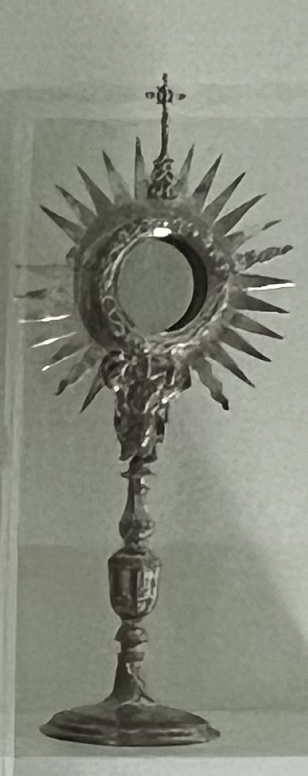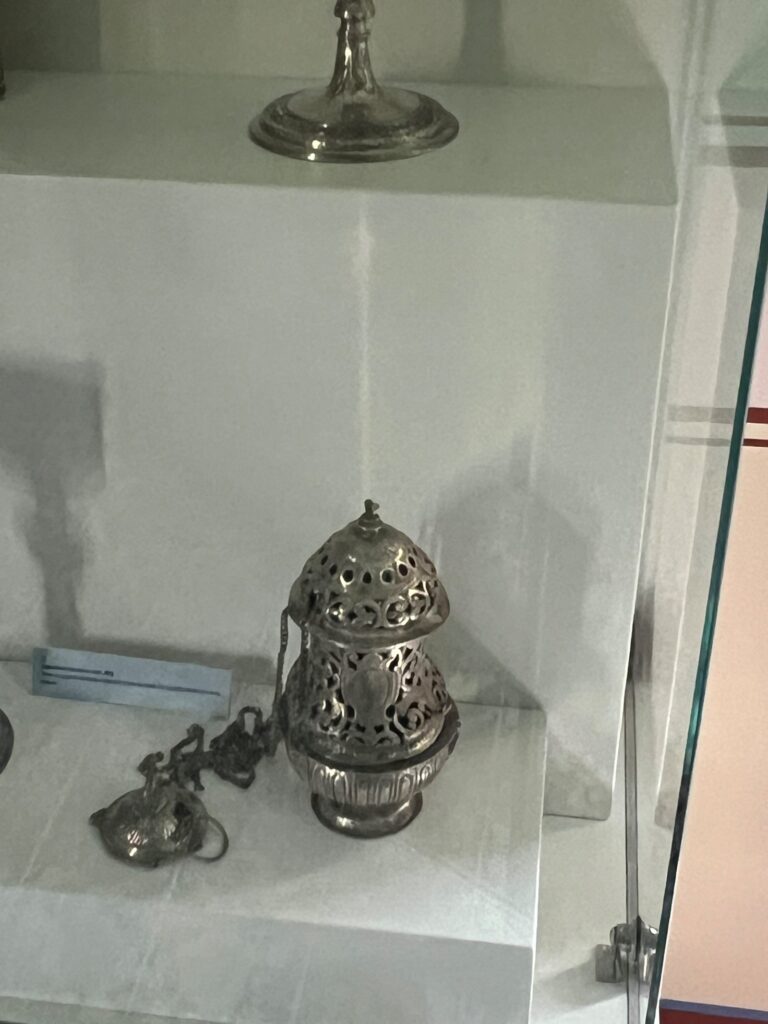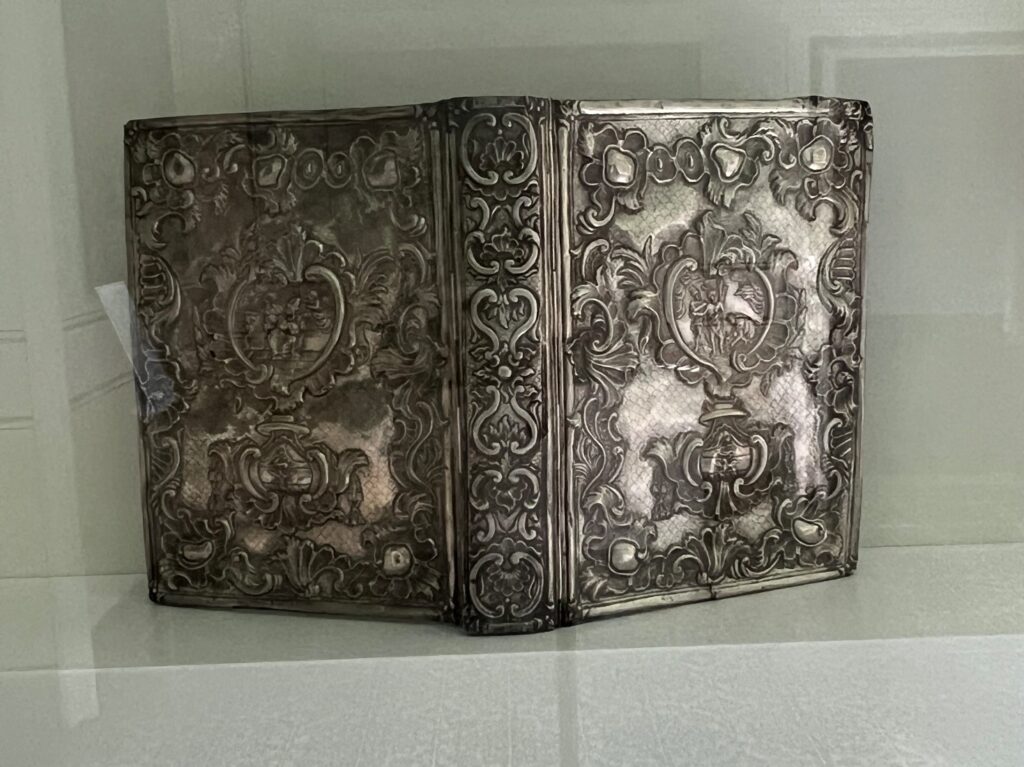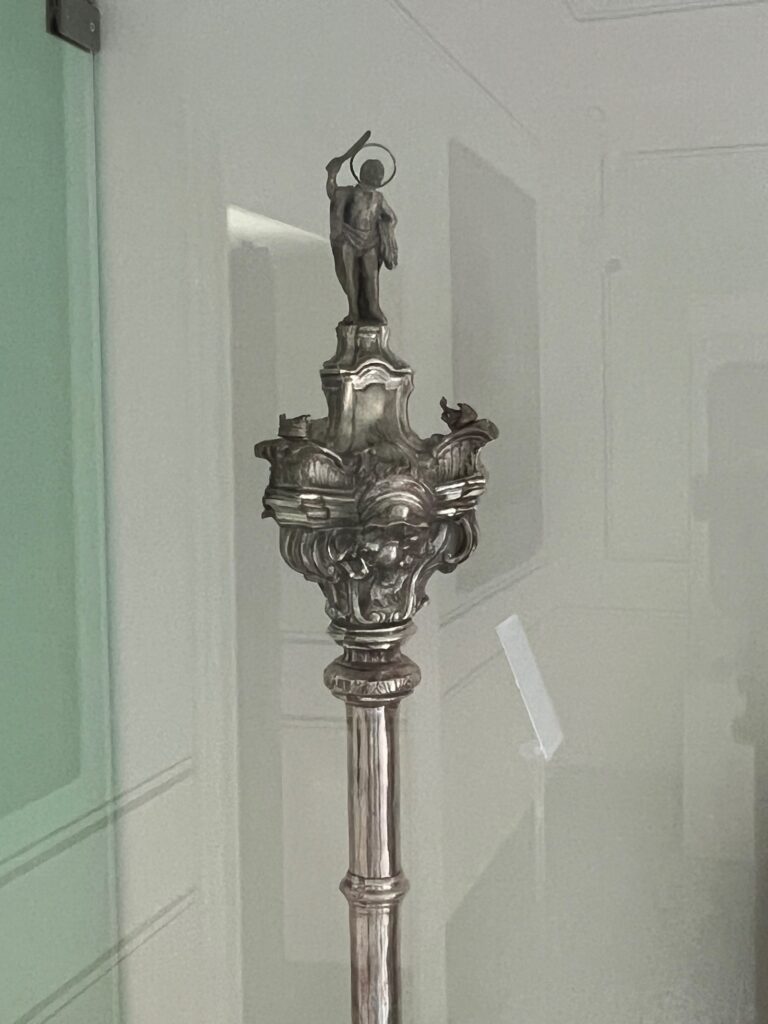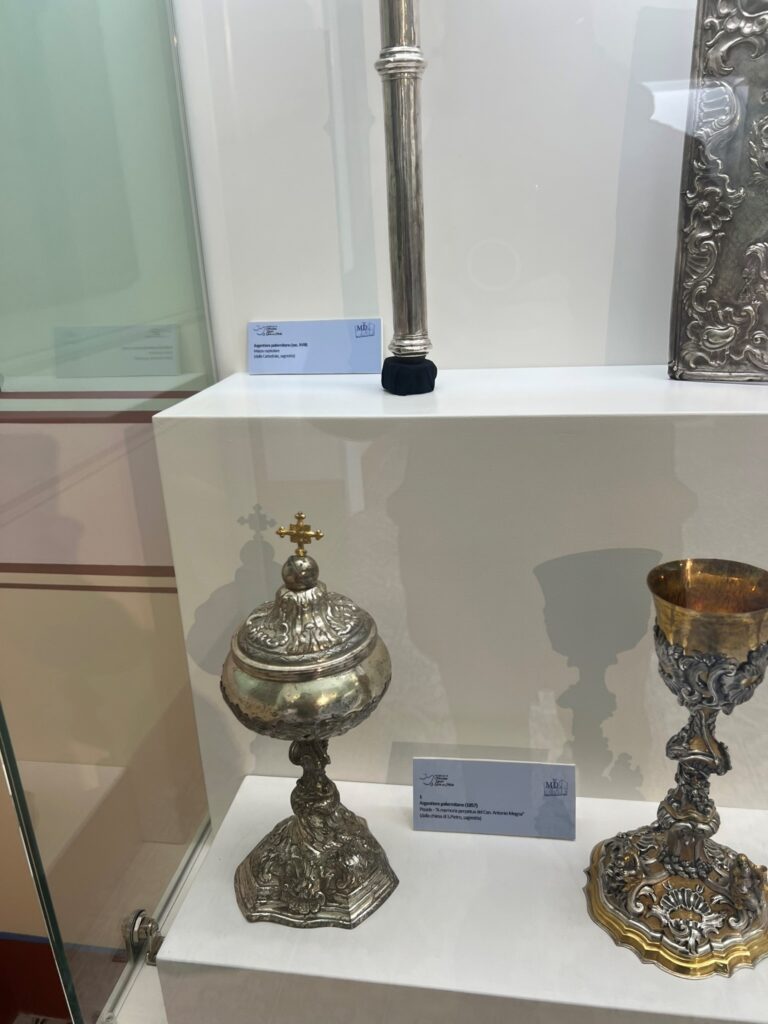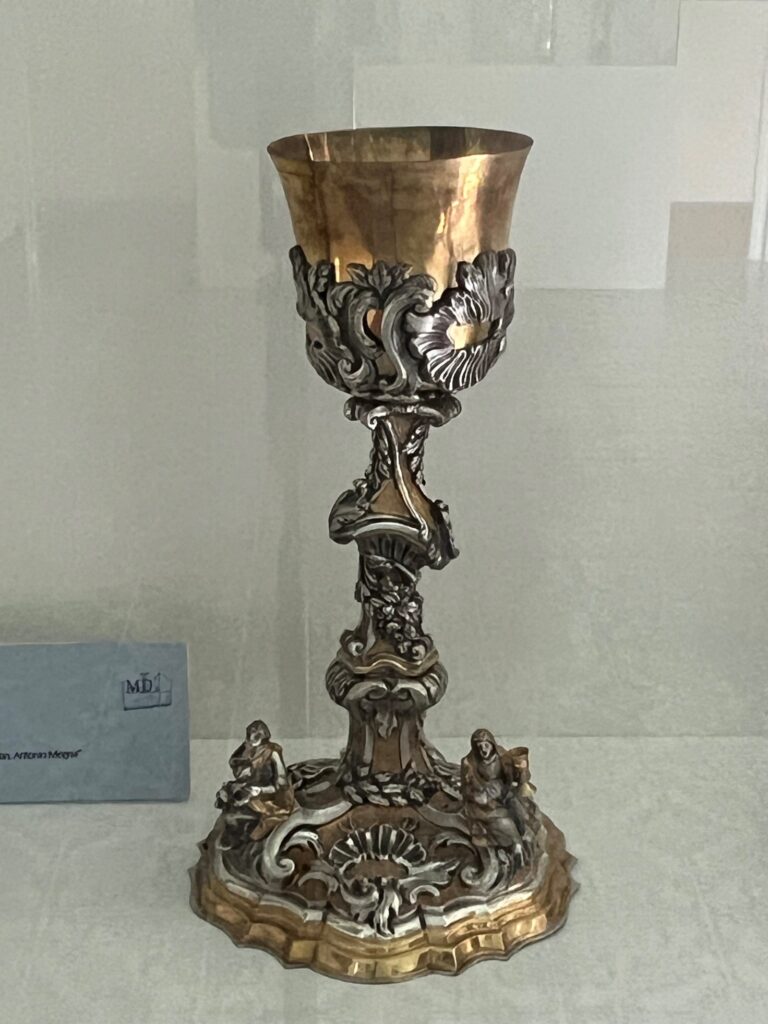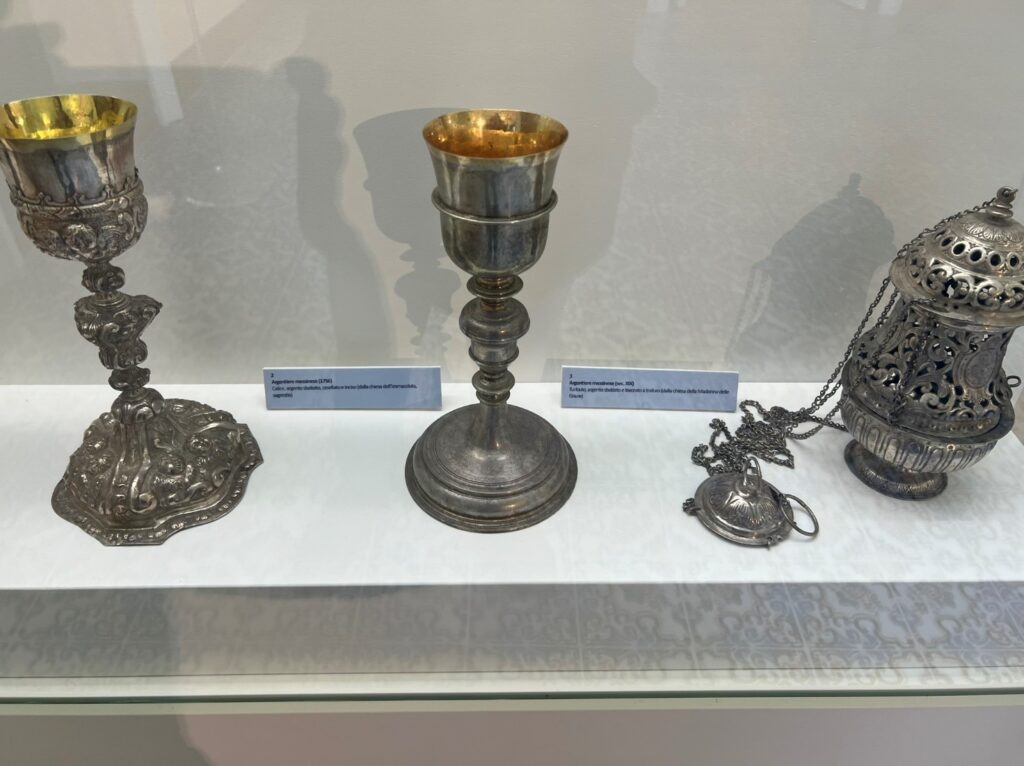(Room of silverware)
The showcase contains:
Artefact, 17th century, hallmarked by the Messina silversmith Console Santo Casella (1635)
MONSTRANCE OF MSGR. CANDIDO
From the sacristy of Lipari Cathedral.
The work, belonging to the sunburst monstrance typology, is of late Baroque taste as evidenced by the soft relief of the heads of the cherubs combined with the subtle ‘interpretation’ of the rays.
On the foot, chiselled with phytomorphic motifs, one can recognise the episcopal coat of arms of Monsignor Giuseppe Candido (Bishop of Lipari from 1627 to 1644): a tripartite shield with sea waves, a lily and three stars.
Artefact from the second half of the 17th century
TURIBOL
Coming from the church of the Madonna delle Grazie at Castello di Lipari before its enlargement in the early 18th century.
In embossed, chiselled and pierced silver, it bears the hallmark of the Messina silversmith Pietro Provenzano. On one of the small medallions of the hollowed cup is a fine engraving depicting the effigy of the Virgin and Child.
18th century artefact by the Palermo silversmith Agostino Natoli, active between 1760 and 1791, 50×23 cm.
SILVER COPRIMESSAL WITH COAT OF ARMS OF MSGR. DE FRANCISCO
From the sacristy of Lipari Cathedral
On the two faces of the embossed silver work, in addition to the coat of arms of Mgr. Vincenzo M. De Francisco, Bishop of Lipari from 1753 to 1769, there are inside the two central medallions the Martyrdom of St. Bartholomew and the sleeping Holy Bishop Agathon receiving the announcement of the arrival of the body of St. Bartholomew from the angel. The large number of bindings for books and lecterns bearing Agostino Natoli’s punch, currently in use for the sacred liturgies held in Lipari Cathedral, suggest that the craftsman specialised in this type of artefact.
18th-century artefact by a Palermo silversmith
CAPITULAR MACE
From the sacristy of Lipari Cathedral
The work, which bears a hallmark used from 1715 to 1825, has a small silver statue of Saint Bartholomew on the top, in the act of brandishing a knife and with his skin gathered around his arm. It was carried in procession by the Chapter of Canons during religious services and bears the coat-of-arms of Msgr Vincenzo M. de Francisco, who wished to make it for the benefit of the Canons.
19th-century artefact by a Palermo silversmith, dated 1857
PISSIDE
From the church of San Pietro di Lipari
The mixtilinear base with a double step consists of a spiral succession of naturalistic and geometric elements. The stem, with a naturalistic knot, ends in a corolla motif while the undercup picks up the embossed ornamental motifs of the base and foot. The lid consists of a small rounded frame, decorated with geometric motifs, and a small dome surmounted by a globe and a gilded cross. The base bears an inscription: in perpetual memory of Can. Antonio Megna in May 1857
18th-century artefact attributable to silversmith Bartolomeo Bartolotta.
CHALICE
From the church of the Immacolata in Lipari.
Made of embossed, chiselled and engraved silver, the chalice is the work of a Catania workshop, dated 1756 and stamped with the initials B.B. attributable to Bartolomeo Bartolotta.
It has a base lap with a decorative fringed leaf motif and curvilinear ribbon motifs with cherubs’ heads. In the large knot, at the centre of the stem, is a cherub’s head between two scrolls above a shell motif. In the undercup, cherubs’ heads with large wings return. The good quality chalice is crafted with technical skill in the soft Baroque relief of the cherubs’ heads and wings and in the delicate phytomorphic decorative motifs.
17th-century artefact by the Messina silversmith Pietro Juvarra, consul of the congregation of silversmiths in 1675
CHALICE
From the sacristy of Lipari Cathedral
The seventeenth-century chalice of simple workmanship is stamped with the very damaged initials Piet (PET IVA) Pietro Juvarra, first found in 1660.

